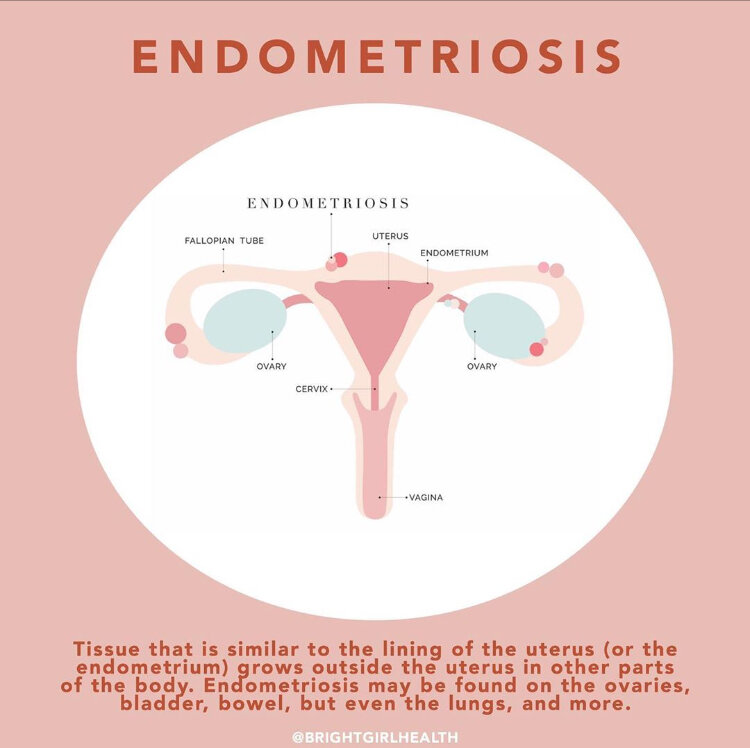Wondering if you or someone you love has endometriosis?
Written in collaboration with student dietitian Rachael Gilholm @rachael_fit_nutrition_
If you’ve ever heard of endometriosis you might think of it as ‘just intense period cramps.’ However as you will soon find out, this condition is so much more than that.
As it stands, 1 in 10 women of reproductive age – that’s 700,000 Australian women and girls - have endometriosis and the scary thing is, the number is believed to be far higher with the delay in diagnosis and lack of definitive research.
It can take up to 12 years for a correct diagnosis, as the best diagnostic method we have is a key-hole surgery called a laparoscopy and whilst it is minimally invasive, it is still surgery and most doctors will not recommend it straight away. Unfortunately, less invasive investigations like transvaginal or transrectal ultrasounds struggle to detect endometriosis in its early stages. For some women, their diagnosis is based only on medical history and symptoms.
So what in the world is endometriosis?
It is a condition where tissue, similar to the lining of the uterus, grows in other parts of the body most commonly within the pelvis. Let me explain…
Each month the female hormone estrogen stimulates blood and nutrients (endometrial tissue) to line the uterus, creating the optimal environment to grow and nourish a baby. If an egg is not fertilised that month, the endometrial lining will shed and leave the body – this is your period. For women with endometriosis, the endometrial tissue is thought to retrograde back-flow through the fallopian tubes and into the pelvis, however this theory is not yet proven. What we do know is that tissue, very similar to the endometrium, is found growing outside the uterus and it will grow and shed in response to estrogen, in the same way our endometrium does. Whilst medical researchers and doctors do not know what causes endometriosis, we do know that women with family members who have endometriosis are at a higher risk of developing the condition, so it is likely that certain genes are involved.
Endometrial tissue can attach and implant on the ovaries, fallopian tubes, bladder and bowel causing inflammation, scarring and pain. Endometriosis can cause organs in the pelvis to stick together and/or form cysts. Some cysts can grow anywhere between 2-45cm in diameter, which if ruptured, can cause excruciating pain.
Endometriosis also includes a range of symptoms that have a major impact on overall quality of life. These include: depression, heavy menstruation, painful intercourse, painful periods and urination, fatigue, bloating, diarrhoea, constipation, nausea, weight gain, and infertility.
Research shows 82% of women are at times are unable to carry out their day to day activities due to the impacts of endometriosis.
For some, endometriosis is only found during investigations for infertility as some women experience very mild or no symptoms at all.
Why I am so passionate about endometriosis?
Research shows that between 30 to 50% of women with endometriosis struggle to conceive which is thought to be due to two reasons:
Structural and anatomical changes - when endometrial tissue grows along the fallopian tubes and ovaries it can cause structural changes, blockages and damage to egg quality.
Inflammation is commonly found in the uterus, making the hormonal environment unfavourable for a potential egg to implant during conception.
With increased awareness amongst health professionals, women and men, we can reduce the time it takes for diagnosis, slow endometriosis progression and help many women improve their quality of life.
If you are concerned you might have endometriosis and are looking for diet and lifestyle solutions to help manage symptoms and improve fertility, I can help you with your next steps.
Stay tuned for more upcoming blogs where I will be diving into the impact of diet on managing endometriosis and my signature endometriosis roadmap to help you reduce pain, gut issues and improve fertility.



